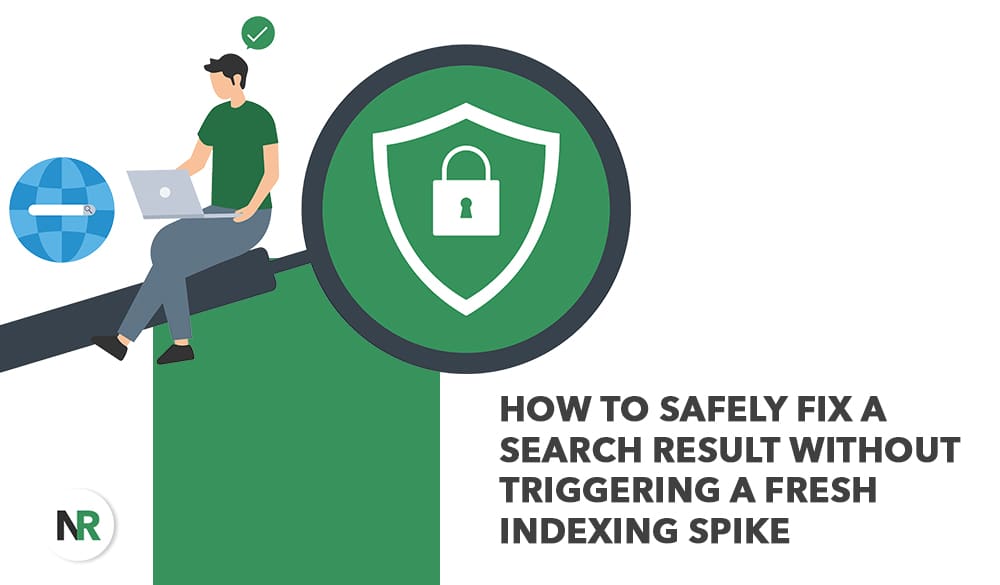In the online reputation management industry, how you appear in Google search results can have a lasting impact on your online presence. A single page, link, or review can define your brand’s reputation. And while every company wants to rank higher on the first page, trying to do too much at once can backfire. That’s where understanding and managing search indexing becomes essential.
What Is a Search Index and Why Does It Matter?
A search index is like a giant digital library. When search engines like Google or others crawl your site, they store what they find in an index. Every article, blog, review, or product page on your site becomes a file in that library. When someone types a keyword or name into Google Search, the algorithm pulls from that index to deliver results.
So, if you want to fix a search result or improve your ranking, you need to understand what’s already in that index and how to update or influence it without overwhelming the system.
What Causes a Fresh Indexing Spike?
Indexing spikes happen when Google suddenly starts crawling and indexing many pages from your site. This might sound good, but it often causes short-term ranking instability. Here’s what can trigger it:
- Large content updates (like posting dozens of articles or guest posts at once)
- Adding or changing many URLs
- Drastic shifts in internal links or structure
- A spike in traffic or social media shares
- Backlink boosts or new mentions from Wikipedia articles or review sites
These changes signal activity to Google, but without a strategy, they can dilute your brand message or lead to the wrong content showing up first.
Why You Should Avoid Sudden Indexing Spikes
Search engines don’t just care about what you post—they care how consistent and trustworthy your site appears. If your site sends mixed signals, your online reputation can suffer.
For example, if you try to fix negative reviews or negative content by uploading dozens of new blogs filled with relevant keywords, Google might temporarily devalue your site. Or worse, AI-generated search results might pick up the wrong page, leading to inaccurate information appearing in knowledge panels or alongside your social media accounts.
Instead of short bursts of activity, the key is steady, thoughtful improvement.
Get started with your free reputation evaluation today
How to Fix a Search Result the Right Way
Whether you’re a business trying to bury negative results or an individual managing a similar situation, these strategies can help improve your online reputation without triggering an indexing spike:
1. Start with a Reputation Audit
Before you make any changes, you need to assess the current situation. Search for your name or company and analyze the first page of the results. Which URLs rank higher? What negative content appears? Are there outdated online profiles or duplicate listings?
Use this audit to identify your top priorities: content to update, remove, or push down.
2. Create High-Quality, Relevant Content
Don’t just flood the internet with fluff. Create high-quality content centered around the topics you want to be associated with your brand. Consider creating blog posts, updating service pages, and writing articles that are tied to relevant keywords.
Include:
- Client success stories
- Expert advice based on your business
- Positive reviews or testimonials
This helps push down negative results and gives users a clearer view of your best self.
3. Refresh Existing Content
Google values recency. Return to your site and update the old pages. Add new insights, improve headlines, or embed updated videos. When you keep content fresh, you signal relevance without adding new URLs that might spike indexing.
4. Use Canonical Tags and 301 Redirects Wisely
If you have duplicate pages or outdated links, use canonical tags to tell Google which version is the main one. Redirect broken URLs to newer content. This helps you maintain site authority and avoid confusing Google’s search algorithm.
5. Request Removal Where It Makes Sense
For certain negative results—like inaccurate information on outdated review sites or pages with your same name but unrelated content—you can request removal. Google offers tools to help remove URLs, especially if the content is harmful or irrelevant.
But removal isn’t always guaranteed. That’s why you should always pair it with positive content strategies.
6. Build Authority with Positive Content
Balance is key. Add positive content regularly. This includes guest post opportunities, mentions on relevant news outlets, and reviews on third-party platforms.
If possible, create Wikipedia articles (if you meet notability standards), contribute to reputable blogs, and encourage clients to leave reviews on trusted sites.
7. Monitor and Adjust Your Strategy
Reputation management is not one-and-done. Regularly monitor your search results. Utilize tools like Google Search Console, Ahrefs, or SEMrush to identify which pages rank higher, determine which keywords you own, and analyze user engagement with your site.
You may need to pivot your focus based on what shows up in search results over a few months.
If You’ve Already Triggered an Indexing Spike
Don’t panic. Indexing volatility is recoverable. Here’s what to do:
- Wait it out: Often, Google recalibrates after a few weeks.
- Update selectively: Focus on key pages and avoid bulk changes.
- Use crawl rate settings in Search Console to slow down Googlebot.
- Submit a reconsideration request if you believe a penalty occurred.
- Continue building trust with helpful content and steady updates.
Final Thoughts
Your online presence is your digital storefront. A single link, review, or outdated article can make or break conversion rates. By using the right strategies to fix a search result, you gain control over your search appearance and strengthen your overall reputation.
Focus on building a professional, accurate, and positive online footprint. That’s what clients trust. And in the online reputation management industry, trust is everything.
